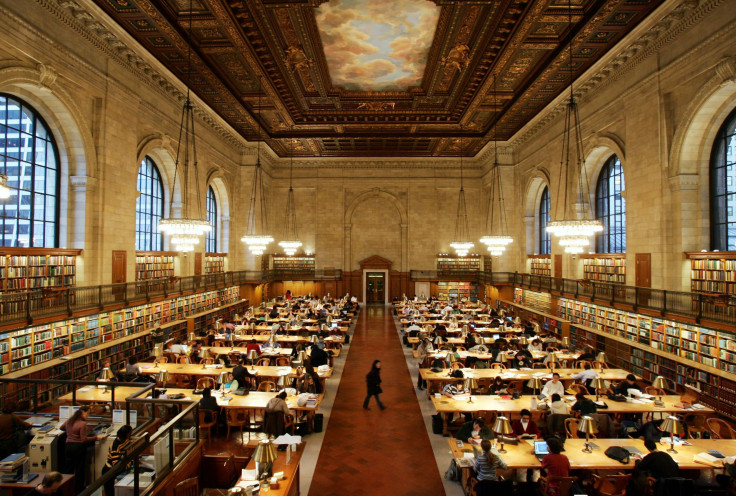National Library Week: Five Amazing American Libraries You Need To See
Dig out your library card, if you can find it, because it’s almost the end of National Library Week in the United States. American libraries hold the country’s vast store of knowledge, but in many cases, the library itself is a part of history. Here are five amazing libraries worth celebrating this week besides the one in your neighborhood.
1. Geisel Library at the University of California, San Diego: Recognize the name but can’t remember why? Geisel is the real last name of Dr. Seuss. In 1995, the university changed the name of the uninspiring University Library Building to the Geisel Library to honor Theodor Seuss Geisel and his wife, Audrey, who lived nearby and often donated to the school’s library system. Built in 1970 and designed by William L. Pereira & Associates, the Geisel Library’s striking design can’t help but bring to mind images of UFOs and alien worlds.
The structure is built out of raw concrete in the brutalist style, which was sweeping the modern architecture movement at the time. Loathed by many, the imposing style nearly went the way of the dodo in the 1990s and 2000s as hundreds of brutalist buildings were demolished, but it has seen a resurgence in popularity in recent years. Luckily, the Geisel Library was not one of the brutalist works to succumb to demolition.
2. Stephen A. Schwarzman Building of the New York Public Library: The main branch building of the NYPL is a sight to see. Located in the heart of the city, just steps from Grand Central Terminal and Times Square at Fifth Avenue and 42nd Street, the Schwarzman building opened in 1911 in a very different New York. It actually predates the modern Grand Central Terminal by two years and in many ways resembles it. Its most striking feature is the Rose Main Reading Room, a massive space with a 52-foot-high ceiling beautifully decorated with paintings and plaster molding. More than 2.3 million people visit the library each year.

3. Armstrong Browning Library, Baylor University: Named after Dr. A.J. Armstrong and the poets whose works he donated to the university, Robert Browning and Elizabeth Barrett Browning, the Baylor University library houses an immense collection of fine art. It also has 62 stained glass windows, most of which depict aspects of the Brownings’ work. It is one of the largest collections of secular stained glass in the world. See photos via the Browning Library's official website.
4. The Texas library born of an abandoned Walmart: The biggest single-floor library in the country wasn’t designed as one; it began life as a big-box Walmart. The architecture firm Meyer, Scherer & Rockcastle submitted a proposal in a 2012 competition to radically redesign the Walmart as a massive, 123,000-square-foot library to serve the community. The firm's entry won, and soon after, workers began stripping the Walmart's interior and constructing a multimedia-equipped modern library with striking interior architectural details.
The McAllen main library building has 16 public meeting spaces, 14 public study rooms, 116 public computers, a cafe, auditorium, art gallery and used bookstore, among other spaces. See photos here.
5. The oldest library in the U.S.? A list of great American libraries isn’t complete without the oldest, but there’s considerable disagreement over which library deserves the term and how exactly to define “the oldest library in the country,” as the Sturgis Library of Barnstable, Massachusetts, points out in this post. Is it the oldest building continuously used as a library? Does a library have to lend its books? Does it have to be public?
What we do know is that one of the earliest libraries in the U.S. was founded when, in 1638, John Harvard donated his collection to a Cambridge, Massachusetts, university that would later bear his name. The Harvard Library system is now the fifth-largest in the country. Benjamin Franklin and friends founded the Library Company of Philadelphia, which offered books both for loan or for sale. One of the first public libraries was founded in Darby, Pennsylvania, in 1743 by a community of Quaker farmers.

© Copyright IBTimes 2024. All rights reserved.






















